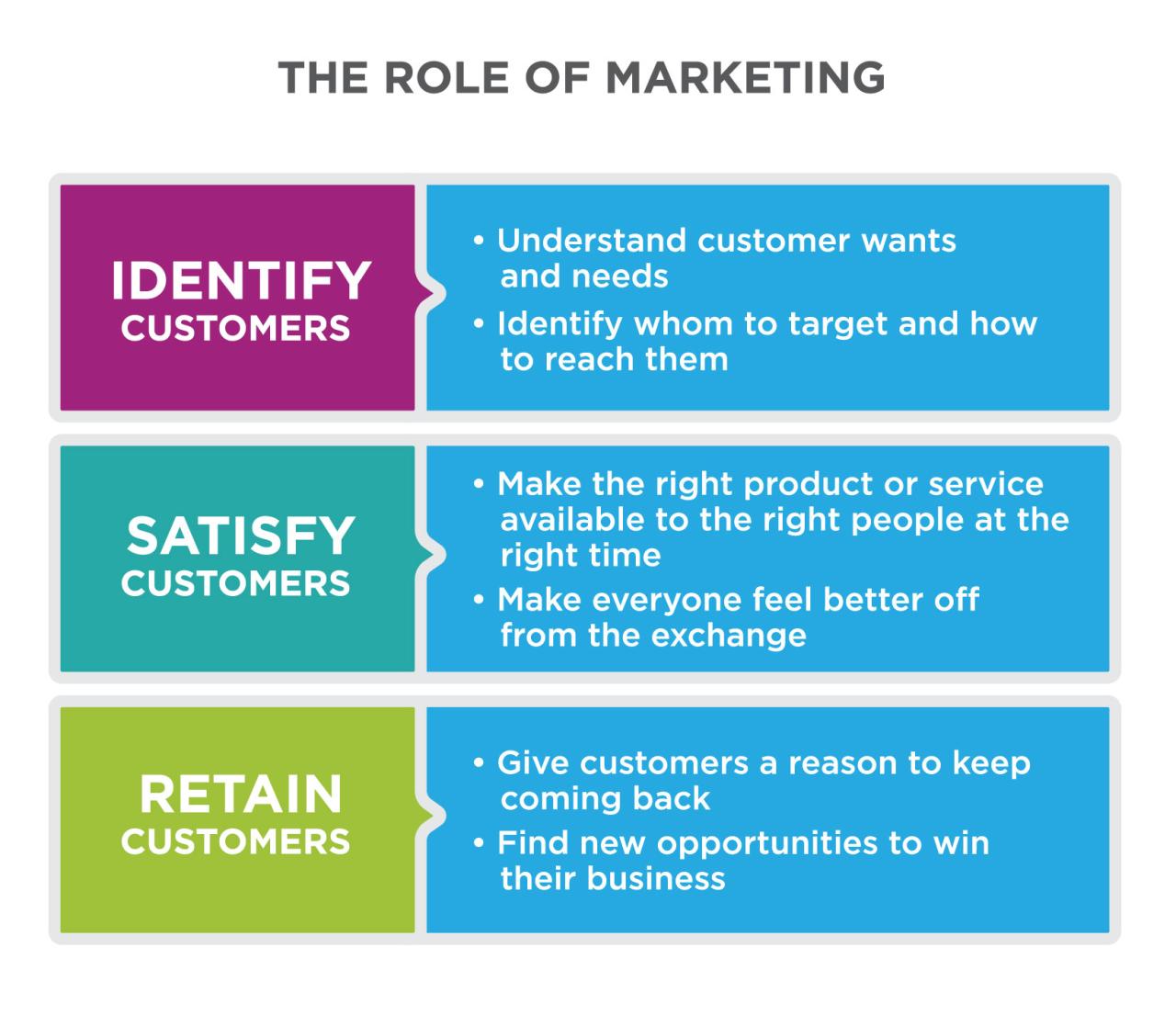
How Customer Empathy Can Inspire Innovation
How customer empathy can inspire innovation is a powerful concept that’s transforming the way businesses approach product development and customer experience. It’s about stepping into the shoes of your customers, understanding their needs, challenges, and desires, and using that insight to create truly groundbreaking solutions.
Imagine a world where every product or service is meticulously crafted to address a specific customer pain point. That’s the power of customer empathy in action. By understanding what makes customers tick, businesses can unlock a wellspring of innovative ideas that resonate deeply with their target audience.
Defining Customer Empathy
Customer empathy is the ability to understand and share the feelings of your customers. It’s about putting yourself in their shoes and seeing the world from their perspective. It’s not just about knowing what your customers want, but also understanding why they want it and how they feel about it.Customer empathy is essential for businesses that want to build strong relationships with their customers and drive innovation.
It’s amazing how understanding your customer’s needs can spark revolutionary ideas. Take, for example, how Warren Buffett and Charlie Munger analyzed BYD’s potential. Their analysis revealed a key challenge that BYD needed to address. This kind of deep dive into customer needs and market dynamics can be the catalyst for truly innovative solutions.
When you understand your customers’ needs, you can better meet them, exceeding their expectations and fostering loyalty.
The Difference Between Customer Empathy and Customer Service
Customer empathy is not the same as customer service. Customer service is about providing helpful and responsive assistance to customers. While customer empathy is about understanding and connecting with customers on a deeper level.Customer service is about providing solutions to problems.
Customer empathy is about understanding the root cause of the problem and addressing the underlying emotions.Here’s an example: A customer calls a customer service representative to complain about a faulty product. The customer service representative can offer a refund or replacement, but that’s not enough.
A customer empathy-driven approach would involve understanding why the customer is frustrated and how the faulty product has impacted their life. This could involve apologizing for the inconvenience, expressing understanding, and offering additional support.
Examples of Brands Demonstrating Strong Customer Empathy
Many brands have built strong reputations for their customer empathy. Here are a few examples:
- Zappos:Known for its exceptional customer service, Zappos goes above and beyond to make sure its customers are happy. For example, if a customer has a problem with their order, Zappos will often offer a free gift or discount to compensate for the inconvenience.
This shows that Zappos understands the customer’s frustration and wants to make things right.
- Amazon:Amazon is another brand that demonstrates strong customer empathy. The company offers a wide range of customer support options, including live chat, email, and phone. Amazon also has a generous return policy, which makes customers feel confident that they can purchase products without worrying about being stuck with something they don’t want.
- Apple:Apple is known for its high-quality products and its commitment to customer satisfaction. The company has a strong reputation for its customer support, which is known for being helpful and knowledgeable. Apple also offers a variety of services, such as AppleCare, which provides customers with peace of mind knowing that they can get help if they need it.
The Impact of Empathy on Innovation: How Customer Empathy Can Inspire Innovation
Empathy, in the realm of innovation, is not just a virtue; it’s a catalyst. It’s the ability to step into the shoes of your customers, understand their needs, and anticipate their desires. This understanding fuels the creation of products and services that truly resonate with them, leading to breakthroughs that drive both customer satisfaction and business success.
The Influence of Empathy on Product Development
Understanding customer needs is the cornerstone of effective product development. Empathy helps us go beyond the surface level of what customers say they want and delve into the underlying motivations, frustrations, and aspirations that shape their choices. This deep understanding guides the development of products that address real pain points and offer solutions that truly enhance their lives.
“Empathy is the ability to understand and share the feelings of another.”
Merriam-Webster Dictionary
Empathy Fosters Creative Solutions, How customer empathy can inspire innovation
Empathy unlocks the door to creative solutions by inspiring us to think outside the box and challenge conventional approaches. By putting ourselves in the shoes of our customers, we can identify their unmet needs and devise innovative solutions that address those needs in unexpected ways.
This empathetic approach can lead to products and services that not only solve existing problems but also create entirely new possibilities.
Examples of Empathetic Innovation
- The rise of ride-sharing services:Companies like Uber and Lyft emerged from the understanding that many people found traditional taxi services inconvenient and unreliable. By focusing on customer pain points like long wait times and inflexible routes, these services offered a more personalized and convenient transportation experience.
- The popularity of personalized streaming services:Platforms like Netflix and Spotify leverage customer data to personalize content recommendations, creating a more engaging and enjoyable user experience. By understanding individual preferences, these services offer tailored recommendations that cater to specific tastes and interests.
- The development of accessibility features:Many technology companies are now incorporating accessibility features into their products, making them more usable for people with disabilities. This is a testament to the growing recognition of the importance of inclusivity and the power of empathy in creating products that benefit everyone.
Methods for Cultivating Empathy

Cultivating empathy requires a deliberate and proactive approach. By implementing structured methods for gathering customer feedback, analyzing data to uncover hidden needs, and engaging in focused brainstorming sessions, businesses can develop a deeper understanding of their customers and translate that understanding into innovative solutions.
Customer empathy, the ability to understand and share the feelings of your customers, is a powerful driver of innovation. It allows businesses to anticipate needs, solve problems, and create products and services that truly resonate with their target audience. A recent example of this is the former GOP lawmaker hearings, which are expected to paint a picture of Trump as abandoned, isolated, and largely responsible for the events of January 6th.
By understanding the public’s desire for accountability and transparency, these hearings could inspire new legislation and reforms aimed at preventing future political violence.
Gathering Customer Feedback and Insights
Gathering customer feedback is essential for understanding their needs and desires. This information provides valuable insights that can be used to inform product development, marketing strategies, and customer service initiatives. Here are some effective methods for gathering customer feedback:
- Surveys:Online surveys can be a cost-effective and efficient way to collect data from a large number of customers. Surveys can be used to gather quantitative data, such as customer satisfaction ratings, and qualitative data, such as open-ended responses to questions about customer experiences.
- Focus Groups:Focus groups provide an opportunity to gather in-depth insights from a small group of customers. Facilitators lead discussions on specific topics, allowing participants to share their experiences, opinions, and ideas.
- Interviews:One-on-one interviews allow for a more personalized and in-depth understanding of individual customer experiences. These interviews can be conducted in person, over the phone, or online.
- Social Media Monitoring:Social media platforms offer a rich source of customer feedback. Businesses can monitor social media channels for mentions of their brand, products, and services. This data can be used to identify customer pain points, understand customer sentiment, and track trends.
- Customer Reviews and Testimonials:Online reviews and testimonials provide valuable insights into customer experiences. Businesses can collect and analyze customer reviews to identify common themes, understand customer satisfaction levels, and identify areas for improvement.
Using Data Analysis to Identify Customer Needs and Desires
Data analysis plays a crucial role in identifying customer needs and desires. By analyzing data from various sources, businesses can uncover patterns and trends that reveal hidden customer preferences and unmet needs. Here are some ways to use data analysis to cultivate empathy:
- Customer Relationship Management (CRM) Data:CRM systems capture a wealth of data about customer interactions, including purchase history, website activity, and customer support inquiries. Analyzing this data can provide insights into customer behavior, preferences, and pain points.
- Website Analytics:Website analytics tools track user behavior on websites, providing data on website traffic, page views, and user engagement. Analyzing this data can reveal which products or services are most popular, which areas of the website are most engaging, and which pages are causing friction for users.
- Social Media Analytics:Social media analytics tools provide insights into customer sentiment, brand perception, and engagement on social media platforms. Analyzing this data can help businesses understand how customers are talking about their brand and identify opportunities for improvement.
Organizing a Brainstorming Session Focused on Developing Empathy-Driven Solutions
Brainstorming sessions provide a platform for teams to generate creative solutions that address customer needs. To ensure the brainstorming session is focused on developing empathy-driven solutions, it’s essential to create a structured process that encourages empathy and understanding. Here are some key elements of an empathy-driven brainstorming session:
- Define the Problem:Begin by clearly defining the problem or challenge that the team is trying to solve. This should be framed in terms of customer needs and desires, rather than internal business goals.
- Empathy Mapping:Use empathy maps to visualize the customer’s perspective. This tool helps the team understand the customer’s thoughts, feelings, needs, and pain points. An empathy map can be used to identify opportunities to create solutions that address these needs.
- Idea Generation:Encourage the team to generate a wide range of ideas, regardless of their feasibility. The goal is to create a diverse pool of potential solutions that can be evaluated later.
- Solution Evaluation:Once the team has generated a list of ideas, evaluate each solution based on its potential to address customer needs and desires. This evaluation should consider factors such as feasibility, cost, and impact.
- Prototyping and Testing:After selecting the most promising solutions, create prototypes or mockups to test with customers. This feedback loop is essential for ensuring that the solutions are truly meeting customer needs.
Empathy in the Customer Journey

Empathy is not just a feel-good concept; it’s a powerful tool for driving innovation and creating a positive customer experience. By understanding the emotional journey of your customers, you can identify pain points, anticipate needs, and design solutions that truly resonate with them.
It’s amazing how understanding your customers’ needs can lead to incredible innovations. Take, for example, the case of Alex Jones, whose false claims about the Sandy Hook shooting, which are now being litigated in court, alex jones damages trial begins over his false claims sandy hook shooting was a hoax , highlight the devastating consequences of ignoring empathy and responsibility.
By truly listening to our customers and understanding their struggles, we can build products and services that make a positive impact on their lives, instead of contributing to harm.
Applying Empathy to Each Stage of the Customer Journey
Each stage of the customer journey presents unique opportunities to demonstrate empathy. By actively listening to customer feedback, observing their behavior, and understanding their motivations, businesses can tailor their interactions to create a seamless and enjoyable experience.
- Awareness:At the awareness stage, customers are just beginning to learn about your brand. Empathy here involves understanding how customers discover your brand and what their initial impressions are. This can be achieved through market research, social listening, and analyzing online reviews.
- Consideration:During the consideration stage, customers are actively evaluating your brand against competitors. Empathy involves understanding their decision-making process and addressing their concerns. This can be done by providing clear and concise information about your products or services, highlighting your unique value proposition, and offering personalized recommendations.
- Decision:This stage is where customers make the final purchase decision. Empathy involves making the buying process as easy and convenient as possible. This can be achieved by offering multiple payment options, providing clear and transparent pricing, and offering excellent customer support.
- Onboarding:Once customers have made a purchase, the onboarding process is crucial for ensuring a smooth transition. Empathy involves providing clear and concise instructions, offering personalized support, and proactively addressing any potential issues.
- Retention:Keeping customers engaged and loyal is essential for long-term success. Empathy involves understanding customer needs and preferences, offering personalized experiences, and rewarding loyalty. This can be achieved through loyalty programs, personalized communication, and providing exceptional customer service.
- Advocacy:The final stage of the customer journey is when customers become advocates for your brand. Empathy involves fostering a sense of community and encouraging customers to share their positive experiences. This can be done through social media campaigns, referral programs, and offering exclusive benefits to loyal customers.
Measuring the Impact of Empathy
While empathy is a valuable asset for any business, it’s crucial to measure its impact to demonstrate its value and guide future initiatives. By quantifying the effectiveness of empathy-driven strategies, we can ensure they’re making a real difference in customer satisfaction and business outcomes.
Metrics for Evaluating Empathy-Driven Initiatives
Metrics play a crucial role in assessing the effectiveness of empathy-driven initiatives. These metrics provide insights into how well we’re understanding and responding to customer needs.
- Customer Satisfaction (CSAT) Scores:CSAT scores measure customer satisfaction with specific products, services, or interactions. Higher scores indicate greater customer satisfaction, reflecting the positive impact of empathy-driven efforts.
- Net Promoter Score (NPS):NPS measures customer loyalty by asking them how likely they are to recommend a company to others. A higher NPS score indicates greater customer loyalty, often attributed to positive experiences driven by empathy.
- Customer Effort Score (CES):CES measures the effort customers expend to resolve issues or complete tasks. Lower CES scores indicate easier and more enjoyable customer experiences, often a result of empathetic support and service.
- Repeat Purchase Rate:Tracking the percentage of customers who make repeat purchases reveals the impact of empathy on customer loyalty and retention. Higher repeat purchase rates indicate customers are satisfied with their experiences and are likely to return.
Key Performance Indicators (KPIs) for Customer Satisfaction
KPIs provide a focused view of how empathy contributes to customer satisfaction. These indicators highlight specific aspects of the customer experience that are influenced by empathy.
- First Contact Resolution (FCR):FCR measures the percentage of customer issues resolved on the first contact. Higher FCR rates indicate efficient and effective customer service, often driven by empathetic understanding of customer needs.
- Average Handle Time (AHT):AHT measures the average time spent resolving customer issues. Lower AHT indicates efficient and effective customer service, often facilitated by empathy that allows for faster problem resolution.
- Customer Churn Rate:Customer churn rate measures the percentage of customers who stop doing business with a company. Lower churn rates indicate higher customer retention, often attributed to positive experiences driven by empathy.
- Customer Feedback Response Time:Measuring the time taken to respond to customer feedback demonstrates the company’s commitment to customer engagement. Faster response times indicate a proactive and empathetic approach to addressing customer concerns.
Tracking and Measuring Empathy-Driven Strategies
Various methods can be employed to track and measure the success of empathy-driven strategies.
- Customer Surveys:Regular surveys allow for direct feedback on customer experiences, capturing insights into the impact of empathy-driven initiatives. These surveys can be used to measure CSAT, NPS, and CES scores.
- Customer Feedback Platforms:Online platforms enable customers to provide feedback, suggestions, and complaints. Analyzing this feedback provides valuable insights into customer needs and perceptions, allowing for improvements based on empathy.
- Social Media Monitoring:Tracking mentions and conversations on social media platforms offers insights into customer sentiment and experiences. Analyzing this data provides valuable feedback for improving empathy-driven strategies.
- Internal Data Analysis:Analyzing internal data, such as sales figures, website traffic, and customer service interactions, can reveal patterns and trends related to customer behavior. This data can be used to measure the impact of empathy-driven initiatives on key performance indicators.
Final Wrap-Up
Cultivating customer empathy is an ongoing journey, not a destination. By consistently seeking out customer feedback, analyzing data, and engaging in empathetic brainstorming sessions, businesses can unlock a continuous stream of innovative ideas that truly delight their customers. In a world saturated with products and services, empathy becomes the key differentiator, setting businesses apart and forging lasting connections with their customers.






